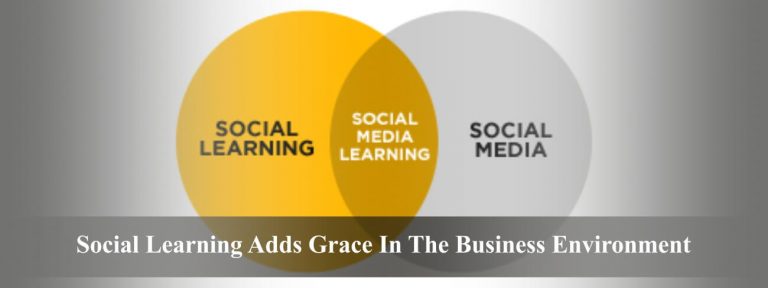Social learning is the collection and sharing of knowledge learned from social media and over the coming years, it’s going to be the preferred learning way for the fast-growing section of the manpower.
Social knowledge gain isn’t a brand new means of learning. In fact, social and collaborative learning is one of humankind’s oldest forms of learning. It is the continuous process of gaining knowledge from others. While grabbing knowledge socially, one can observe other people, raise queries, and share information resources.
The solution of social learning has been reconsidered for its application in the workplace. Social learning is being learned from colleagues, blogs, wikis, discussion forums, subject-matter directories, and videos. Businesses that support social learning have environments that encourage voice communication and collaboration between learners across the organization.
Benefits of Social Learning
Integrating social learning in an organizational learning strategy will be beneficial for the leaders as well as employees. Social learning can build the training experience and lead to a positive outcome, both in terms of personal learning success as well as a positive return to the organization.
In a company, social learning supports continuous coaching to an employee. Owing to this, firms are searching for tools that can help make learning a more continuous process throughout an employee’s career. According to the Brandon Hall report, more than 60% of corporations wanted their employees to act with learning resources on a daily or weekly basis. Therefore, when it comes to social learning, employees need to pay attention towards their requirement without interrupting their workflow.
Sometimes, all it takes is one little tip or a piece of recommendation from a fellow colleague that can help to re-focus on work or get the job done quicker within the workplace. Collaborations and interactions help learners learn better. Social learning not just helps learners retain the learning, but also aid to apply that learning on the given task.
Millennial are poised to take over as the majority of the global workforce in a few years, consequently becoming the future of organizations. It’s a no-brainer that the modern generation loves social media and social learning. They use social media continuously and are likely to relate to social learning more than people from the older generations.
Social learning enhances corporate culture and encourages employee’s collaboration. Humans are natural social beings who need to be a part of a group. Learners that are able to support and be supported by other learners are more likely to feel a part of something bigger and more likely to pay attention to that feeling.
It has also increased with the growth of social media tools and online discussion forums, allowing employees to easily connect online with peers and experts for advice. In a recent study published in the Harvard Business Review, researchers discovered that employees who were connected to their peers via internal social platforms were more engaged and productive.
Here are the ways to create social learning in business environment.
- Content: Organizations must create and curate the right content in the form of knowledge-based assets, experiences, and expertise. Social learning is all about curating resources that are relevant to the audience.
- Utilization of information: It is also critical to paying attention to how information is consumed. The content must be usable, searchable, and accessible to references and reuse.
- Involvement: Active participation is fundamental to social learning. Finding ways to support user-generated content plays a crucial role in the success of the learning initiative. HR and business managers must encourage employees to share their learning on an ongoing basis.
- Conversation: When employees are encouraged to talk about their work and discuss ideas freely, learning is effective. Conversing about content also makes the key takeaways relevant to the context of the business.
- Participation: It is at the heart of social learning. It not only helps frame better ideas, but also helps foster a culture of teamwork.
- Presentation: It is a pattern where one person gives information to others. The information may be on any topic. This type of interaction can also be used in speeches, lectures, and demonstrations so that interaction continues in two ways rather than in one single way.
- Connections: Connections to generate content, share ideas, and dispel information- these go a long way while competing in business.
- Small Social Group Interaction: Breakout rooms and breakout teams are the direct products of small group interaction. Short term teamwork is great for this form of interaction. This interaction format is also a good way to practice communication and interpersonal skills.
- Control: Organizations often forget to exert the necessary oversight to ensure the learning quality and effectiveness. Social learning tools should enable customers to govern the continuum of openness and control as it applies to their business.
Key Benefits of Electronic Social Learning for the Organizations
Audio-visual conferencing make it easy for all organizations and employees to interact in real-time. Occasional messages can be sent through microblogging and notification from any social media or tools available in an organization.
File and media sharing, social bookmarking, whiteboards and application sharing all emulate natural human interaction patterns. Knowledge sharing are often a game changer and an effective tool for social learning. The open access to exchange information motivates employees to learn socially.
Today, organizations are recognizing the value that social learning brings to the business. It is essential to ingrain a social culture in the business environment that embodies values such as openness, transparency, connectivity, communication, and collaboration. Therefore, social learning helps the entire organization, its employees and employers to come together and work for its common goal and purpose.















